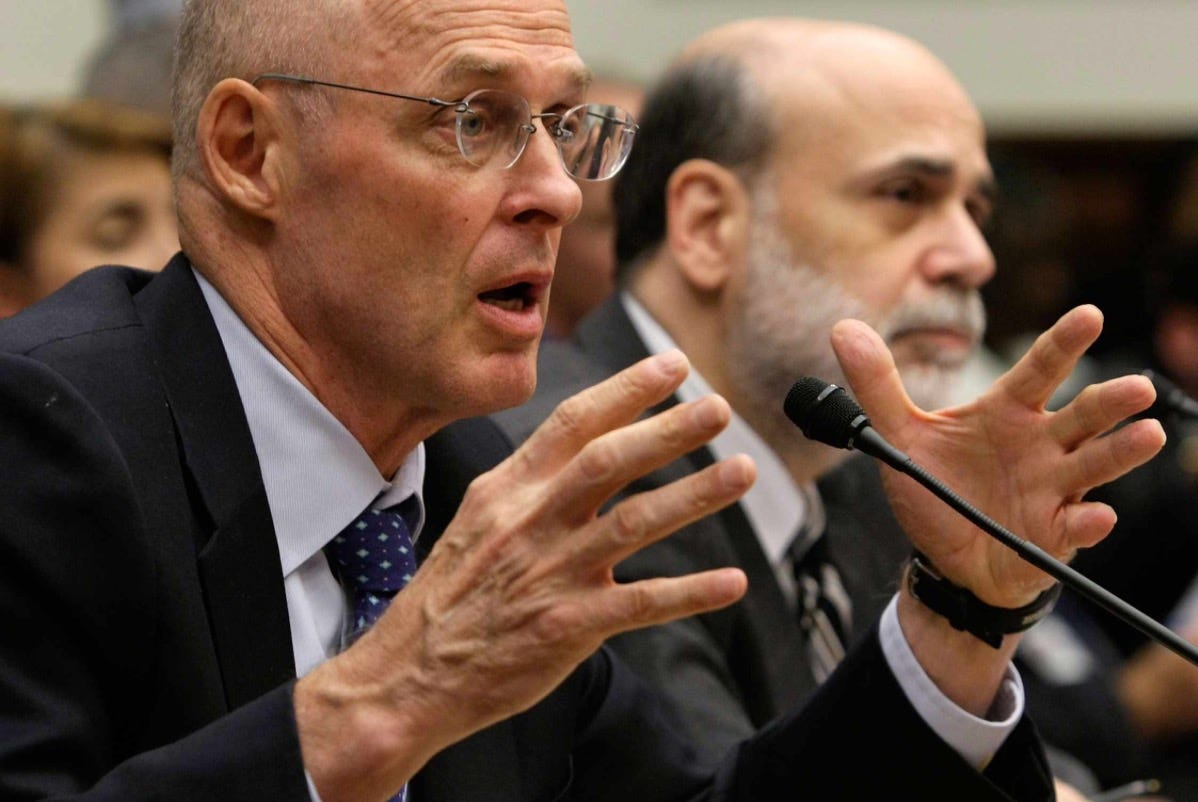
Former Federal Reserve chair Ben S. Bernanke, Douglas W. Diamond of the University of Chicago, and Philip H. Dybvig of Washington University in St. Louis were awarded the Nobel Memorial Prize in Economic Sciences on Monday for their work on banks and financial crises.
Policymakers from that time argue that bailing out critical financial institutions was necessary to stave off an even greater meltdown. Others maintain the government should have taken even more aggressive actions — to save Lehman Brothers, for instance, or rescue homeowners with underwater mortgages. Still others say that the government shouldn’t have used taxpayers’ money to save wealthy bankers.
Deborah J. Lucas, MIT Sloan distinguished professor of finance and director of the MIT Golub Center for Finance and Policy calculated that the total direct cost of crisis-related bailouts on a fair value basis was about $498 billion, which amounted to 3.5 percent of gross domestic product in 2009. The main winners were the large, unsecured creditors of large financial institutions, most likely to have been large institutional investors such as banks, pension and mutual funds, insurance companies, and sovereigns.
Just six banks — JPMorgan Chase, Bank of America, Citigroup, Wells Fargo, Goldman Sachs and Morgan Stanley — were the recipients of 63 percent of the Fed’s average daily borrowing, representing about a half-trillion dollars at peak periods just for those firms. The bailout plan not only didn’t really help community banks, it massively accelerated their disenfranchisement, by placing them in a separate economic class from those deemed Too Big to Fail. This is why the Independent Community Bankers of America supported the bill introduced by Sherrod Brown (D-OH) and David Vitter (R-LA) in 2013 to break up Too Big To Fail banks.
The whole concept of the bailouts was supposed to be unfreezing the economy and spurring lending, but banks used the money to fill reserve balances at the Fed. In 2012, for instance, banks were only required to keep about $100 billion in reserve, but according to the San Francisco Fed, reserves averaged $1.5 trillion over the first six months of that year. That was $1.4 trillion taken out of the economy.
By way of contrast, the pandemic relief money targeted the citizens who needed it. The U.S. economy had lost an 22 million jobs in the first two months of the pandemic. It has gained them all back, plus half a million more. After the previous recession, it took more than five years to achieve that feat, according to the New York Times. Today, long-term unemployment is as low as it has been in 20 years. The overall unemployment rate hasn’t been lower than this since the 1960s. Defying claims that “no one wants to work anymore,” 80.2 percent of Americans in their prime working years had jobs in September, above the rate in the year before the pandemic.
The latest labor statistics show that the U.S. economy added 263,000 jobs in September, higher than analyst estimates of 250,000. The unemployment rate came in at 3.5%, down from 3.7% in August.
With people having money to spend, demand for goods increased more quickly than the supply chains could meet the demand, causing today’s high inflation. The war in Ukraine has added to the stress with the fossil fuel industry increasing the cost of oil.
The Federal Reserve has acted to reverse inflation by raising interest rates with the stated goal of increasing the unemployment rate. The Fed wants to see hundreds of millions of more people out of work in order to control the overheated economy, reversing the gains made under the pandemic relief packages.
Now the Nobel institution has fallen behind the bankers, rewarding Bernanke and friends for putting the banks first.
One can see why by analyzing where those new jobs have occurred: Leading the gain in jobs was the leisure and hospitality industry, which added 83,000 jobs in September — and employment in food services and drinking places made up 60,000 of those jobs alone. Manufacturing and construction also came in hot, adding 22,000 and 19,000 jobs, respectively.
The largest non-governmental losses in jobs came from the financial industry, which shed 8,000 between August and September. Business support services — such as telemarketing, accounting, and administrative and clerical jobs — are also bleeding jobs, according to CNN. The sector lost 12,000 in September. Meanwhile, legal services lost 5,000 jobs, and advertising services also dropped 5,000 jobs.
Support Our Efforts
The News Café is a virtual meeting place where we discuss the news of the day: local, statewide, national, and international.
An offering by the Liberty Independent Media Project, the News Café does not rely on advertising, as most media outlets do, freeing us to provide an independent focus on events and cultural issues. The project instead relies on direct monetary support from donors and subscribers, as well as providing news to other media outlets.
If you like what we’re doing, and want to see more local news you will not find elsewhere, please give what you can.
Subscriptions to this newsletter are available for as little as $5 per month. Subscribers can share their knowledge, thoughts, and questions about any topic, and we may select some of those subjects for more in-depth analysis.
If you’re unable to pay but still want to receive all of the free public posts in your in-box, click the Subscribe button and select a free subscription.
Substack, the platform used for the News Café, now offers an audio version of the news for those using the Substack app. Simply click on the headphones icon at the top of the article to listen to the day’s stories.
Subscribe to The News Café
Exchanging and Engaging in News Topics













